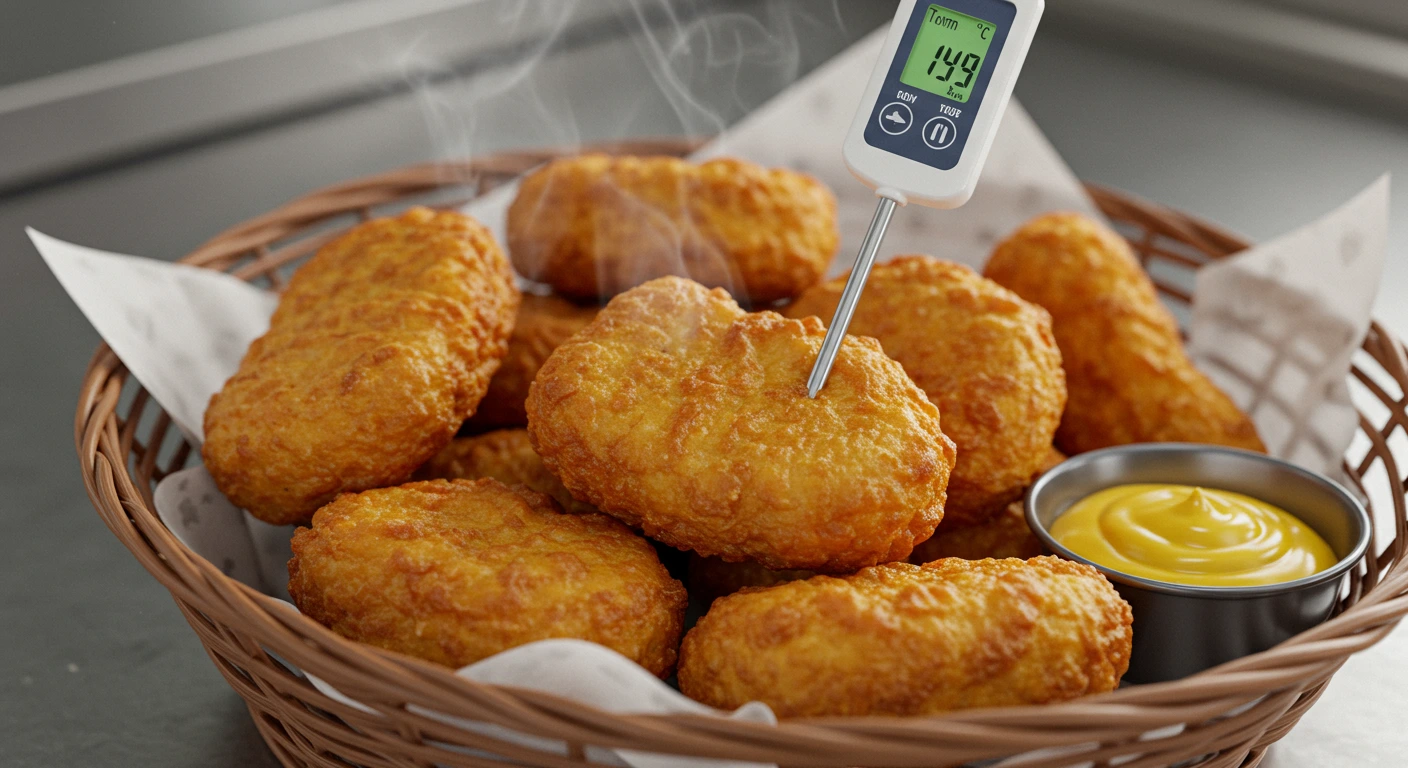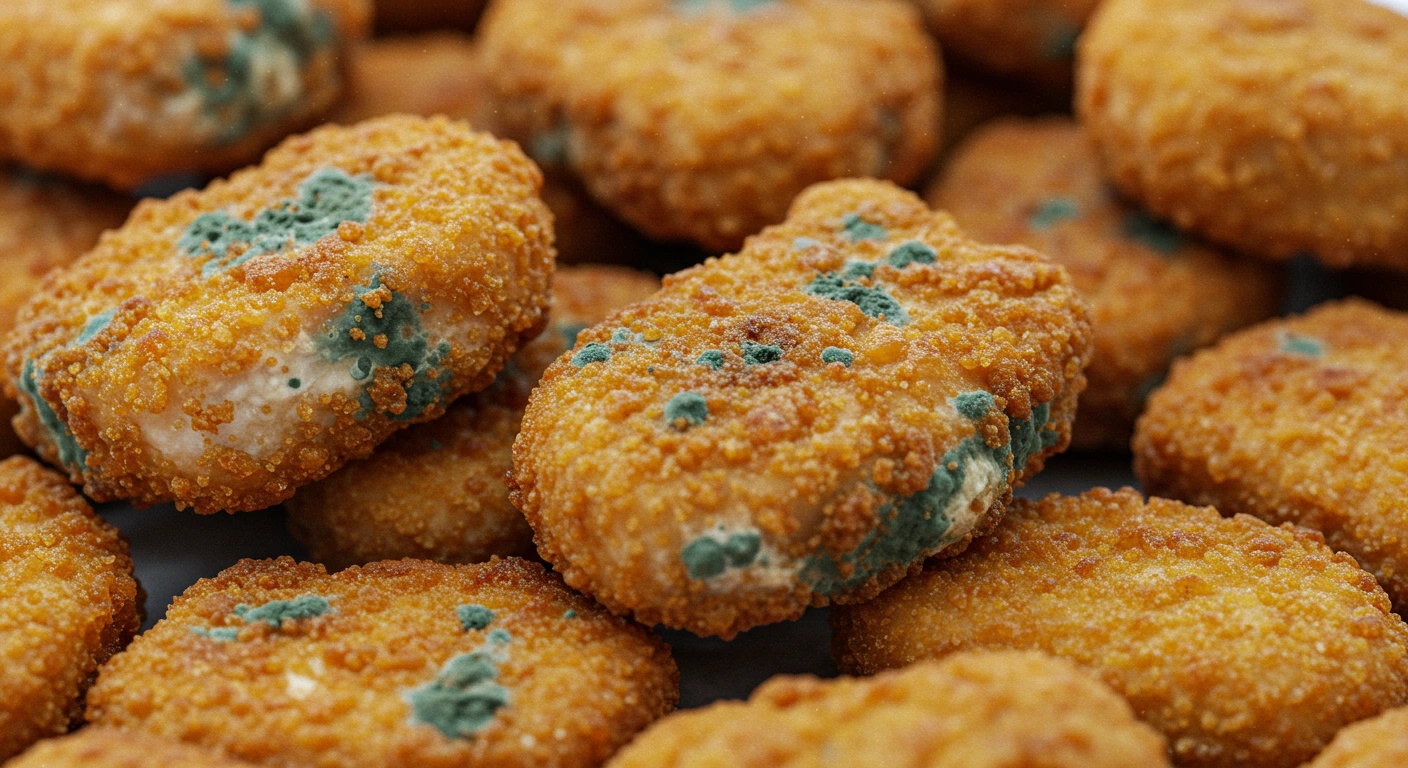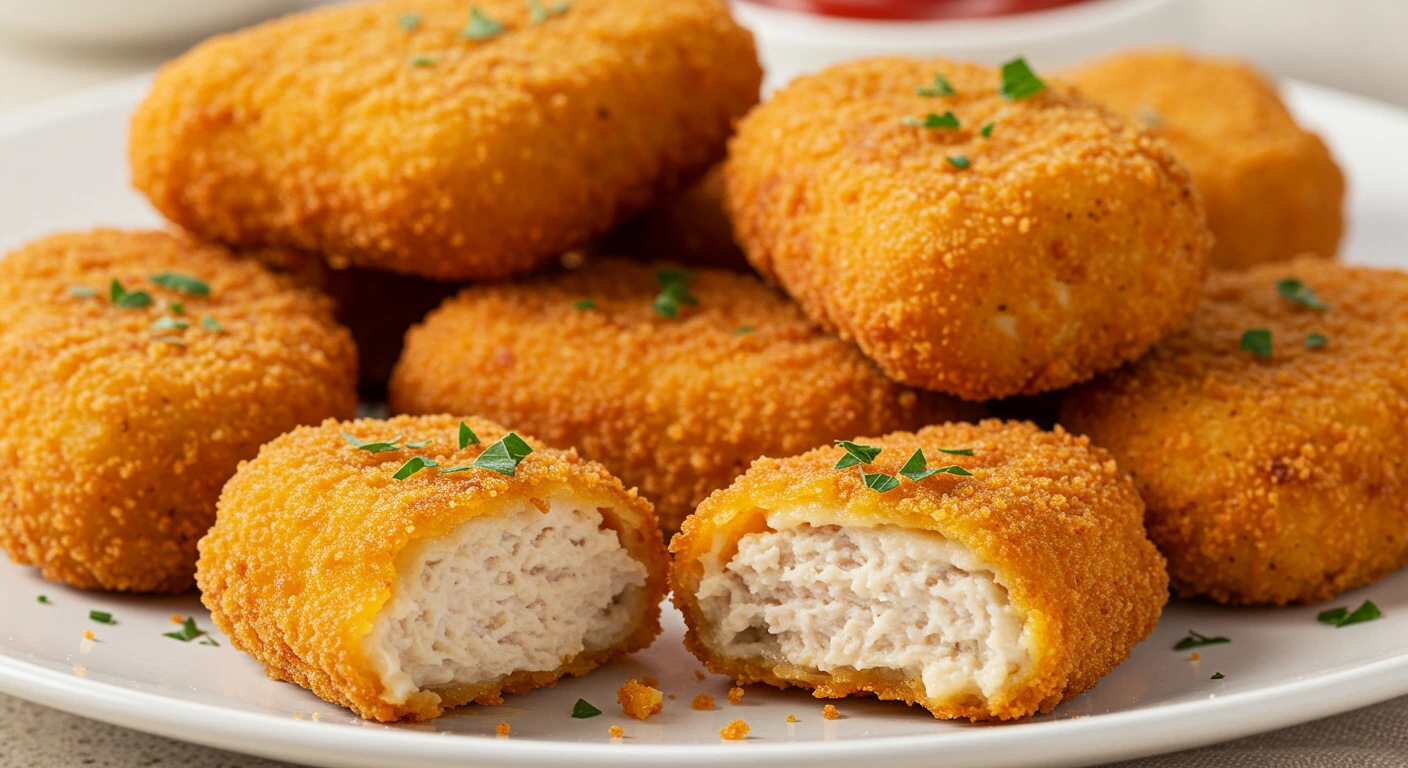You’ve just made a fresh batch of chicken nuggets; they look golden, crispy, and piping hot. You eat a couple, then think about saving the rest for later. But here’s what most people forget: cooking them properly is only half the job. The moment they leave the fryer, the clock starts ticking. If they’re not kept hot enough, they’re not just cooling down; they’re becoming dangerous!
So, what is the minimum Hot holding temperature for chicken nuggets? A Number that matters more than most people realize. Drop below it, even for a short time, and you’ve opened the door for bacteria to grow fast. And no, a quick reheat later doesn’t always fix it.
In kitchens, cafeterias, buffets – anywhere food is made and held, hot holding isn’t optional; it is a line of defense. In this blog, we will get into exactly why that number matters, what happens when food dips below it, and how to keep your nuggets safe, starting from prep to plate!
Because the truth is simple: If they aren’t hot, they’re not safe!
What Is Hot Holding?
Before we get into the exact temperature, let’s quickly clear up what Hot Holding actually means. It’s simply the process of keeping cooked food warm. You’ll see it in action everywhere, from school lunch lines to buffets and catered events, where food’s made in bulk and has to sit out for a bit.
Cooking gets rid of the bacteria, but if the food cools down too much afterward, those bacteria can start creeping right back up. That’s why Hot Holding matters. It keeps the food at a safe temperature, so it’s still good to eat by the time it hits someone’s plate.
At What Temperature Should You Serve Your Chicken Nuggets?

Chicken nuggets are only truly safe to serve if they’re held at a temperature of 135°F or 57°C or even higher after cooking. That’s the minimum hot holding temperature, and it’s not just a technicality. It’s the line that keeps your food out of trouble once it leaves the fryer.
Why does this matter? Because germs like Clostridium Perfringens and Bacillus Cereus can come to thrive in your nuggets after they begin to drop below 135°F. These bacteria aren’t rare, and they don’t waste time. On top of it, they multiply fast and can cause anything from mild stomach cramps to more serious foodborne illnesses!
That’s why holding nuggets at or above 135°F isn’t just a good idea; it’s a food safety essential. Even if they’re cooked perfectly, letting them sit out at a lower temp for too long can undo all that effort. Keeping them hot is the only way to be sure they stay safe until they hit the plate.
Why Is The 135°F Threshold So Important?
Chicken nuggets lose heat quicker than you’d think, especially when they’re cooked in large batches and left out without proper warming. If their temperature slips below 135°F, it opens the door for bacteria to grow, and these bacteria don’t come into play. In some cases, they can double in number in no time, turning those once-crispy nuggets into a potential health hazard.
That little drop in temperature can turn out to be a serious risk. So, maintaining the Minimum Hot Holding temperature is important. It helps in:
- Prevents foodborne illnesses
- Keeps food quality and texture intact
- Complies with food safety regulations
- Builds trust in your food service operation
Even regulatory agencies like the FDA Food Code and USDA Guidelines emphasize how crucial the 135°F rule is. It doesn’t just minimize health risks but also upholds uniform standards in food businesses!
Understanding The Danger Zone

The temperature between 41°F and 35°F or 5°C and 57°C is considered as the Danger Zone. It might seem like a reasonable temperature to store your food, but it’s actually the sweet spot for bacteria. If you let cooked food sit in that zone for too long, you’re giving harmful microbes the perfect environment to multiply fast. In just a few hours, what started as a safe meal can turn into a health risk!
Chicken nuggets, once they’re cooked, need to stay hot. If they drop below 135°F, they can turn unsafe pretty quickly. Because they’re packed with protein and moisture, they make an easy target for bacteria. And the longer they sit in that unsafe range, the worse it gets.
And here’s the thing: simply reheating them later doesn’t always get rid of the bacterial toxins that may have formed while they were sitting at unsafe temperatures. Once those toxins are there, they don’t just disappear with heat.
Tools You Need For Hot Holding
To keep chicken nuggets and other cooked items at the correct Hot Holding temperature, here are the tools commonly used in food service:
- Hot-holding equipment like steam tables or hot boxes
- Heat lamps
- Slow cookers
- Rice warmers
- Chafing dishes with stereos
- Insulated food containers
Each of these tools helps maintain a consistent holding temperature, and the key word here is consistent. It’s not enough to heat once and forget. You must actively monitor the internal temperature of the food.
How To Measure The Temperature Accurately
Use a calibrated food thermometer to make sure your Chicken nuggets are safe to be devoured. Here is how to do it correctly:
- Insert the thermometer into the thickest part of the nugget or the center of the food pile if holding a batch.
- Avoid touching the sides of containers; this could give you a false high reading.
- Check the temperature at regular intervals, at least every 2 hours.
- Record your temperature checks for compliance purposes.
- Don’t rely on visual cues or your hand; only a food thermometer can tell you the real story.
How Long Can You Hot Hold Chicken Nuggets?

Most food establishments follow a 4-hour rule as a best practice; after that, they usually discard or refresh the batch. This is because even though you can keep your nuggets for as long as you want, given they are 135°F, they might not be edible after a point. The longer you hold onto them, the more their quality will start to drop! Textures may change, and flavors may dull. So, even if it’s technically safe, it may no longer be desirable after a few hours.
What To Do If Food Falls Below 135°F?
If you catch it early enough, within 2 hours of the heat dropping, you can reheat those chicken nuggets to 165°F and pop them back into hot holding. But if it’s been over 4 hours, it’s best to toss the food. Remember, never try to ‘save’ food that’s lingered too long in the temperature danger zone. The health risk simply isn’t worth it!
Examples Of Common Hot Holding Scenarios
Here are a few real-world examples where hot holding applies:
Buffet line
If you’ve got chicken nuggets sitting under a heat lamp, don’t just assume they’re hot enough. Grab a thermometer and check. They need to be holding steady above 135°F, with no exceptions.
School lunch service
When food’s been cooked ahead of time and kept warm in hot boxes, it has to stay above 135°F right up until it’s served. No shortcuts here; keeping the temperature steady is key.
Catering
If insulated containers and chafing dishes are cold to start with, your food won’t stay hot for long, and that’s when problems begin. Before loading up food, make sure they are preheated!
Regardless of the setup, regular temperature checks aren’t just an additional step; it is essential because it is the only way to make sure your food stays safe to eat.
Why Chicken Nuggets Specifically?
While this rule applies to most cooked foods, chicken nuggets are especially worth highlighting for a few reasons:
- They are often made in large batches and kept in warmers for extended periods.
- They’re high in protein and moisture, a territory loved by bacteria.
- They’re more often than not served to kids, who are more susceptible to foodborne illnesses.
So remember, 135°F is a simple but essential line of defense.
Using Hot Holding Temperature Charts
Many food safety teams use hot-holding temperature logs or charts to track and verify food safety compliance. These charts are helpful for:
- Monitoring and recording hourly food temperatures
- Training new staff on proper food handling procedures
- Ensuring health inspection readiness
Charts can be printed out and posted near the holding station or even maintained digitally, depending on your setup. But whether it’s paper or tech, the process should be easy to follow and consistent.
Final Thoughts: Keep It Hot, Keep It Safe!
To finish this off, let’s recap the important point: What is the minimum Hot Holding temperature for chicken nuggets? The answer is 135°F, with no exceptions.
Holding cooked chicken nuggets at that temperature minimizes bacteria growth, protects customers, and keeps you in compliance with health codes. So, it does not matter if you have a food truck, cafeteria, or restaurant buffet; only the temperature does.
Remember, use the right equipment, keep checking the temperature, and don’t rely on guesswork. Keep it hot!







